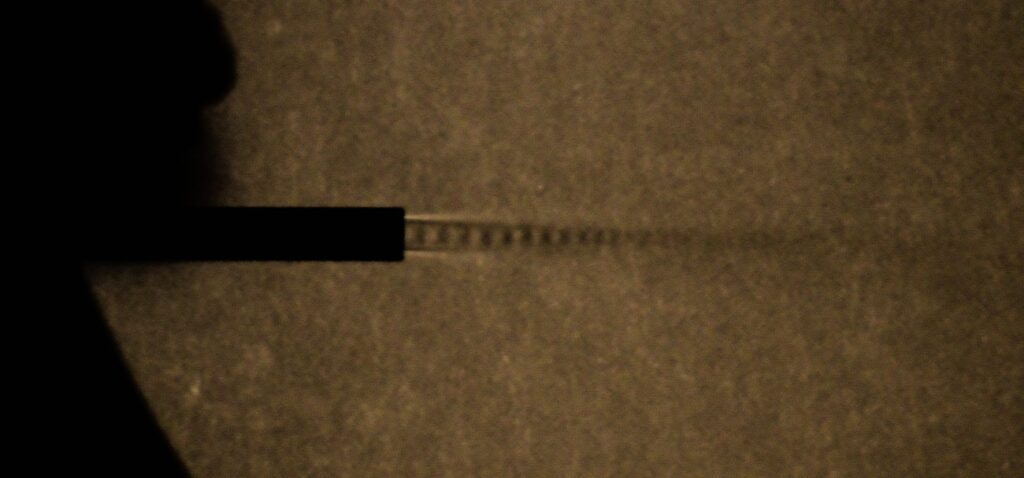Close-up schlieren image of compressible flow jet of difluoroethane gas from a can.
Cold Gas
Categories
Flow Vis Guidebook
- Introduction to the Guidebook
- Overview 1: Phenomena. Why Does It Look Like That?
- Overview 2: Visualization Techniques
- Overview 3: Lighting
- Overview 4 - Photography A: Composition and Studio Workflow
- Overview 4 - Photography B: Cameras
- Overview 4 - Photography C: Lenses - Focal Length
- Overview 4 - Photography C: Lenses - Aperture and DOF
- Overview 4: Photography D: Exposure
- Overview 4 - Photography E - Resolution
- Overview 5 - Post-Processing
- Clouds 1: Names
- Clouds 2: Why Are There Clouds? Lift Mechanism 1: Instability
- Clouds 3: Skew - T and Instability
- Clouds 4: Clouds in Unstable Atmosphere
- Clouds 5: Lift Mechanism 2 - Orographics
- Clouds 6: Lift Mechanism 3 - Weather Systems
- Boundary Techniques - Introduction
- Dye Techniques 1 - Do Not Disturb
- Dye Techniques 2 - High Visibility
- Dye Techniques 3 - Light Emitting Fluids
- Refractive Index Techniques 1: Liquid Surfaces
- Refractive Index Techniques 2: Shadowgraphy and Schlieren
- Particles 1- Physics: Flow and Light
- Particles 2: Aerosols
- Particles 3: In Water
- Particles 4 -Dilute Particle Techniques
- Art and Science
- TOC and Zotpress test
- Photons, Wavelength and Color


6 Comments. Leave new
Hi Brian,
This is such a crisp image! I love how you can see the shock structures in detail!
Very cool showcase of schlieren imaging. I like how we can see the diamonds start to fade farther away from the source.
This image is amazing. I didn’t get to ask this in the critique, but what at what pressure was the compressed air can? Was it a standard can you can get from Home Depot?
The difluoroethane at 25 C has a vapor pressure of about 6 atmospheres, so a new can at equilibrium will be that pressure. However, extensive use will cool the difluoroethane and reduce the vapor pressure. This can was purchased from Home Depot.
Really impressive image, that is great clarity for schlieren imaging
Very cool image Brian! I had no idea that compressed air cans were able to create Mach diamonds. The light lines near the outlet of the straw could be created by the interactions between the outflow and the surrounding air. The surrounding air is initially at rest, but is then accelerated by the outflow, which could result in a drop in density of the immediate surrounding air.